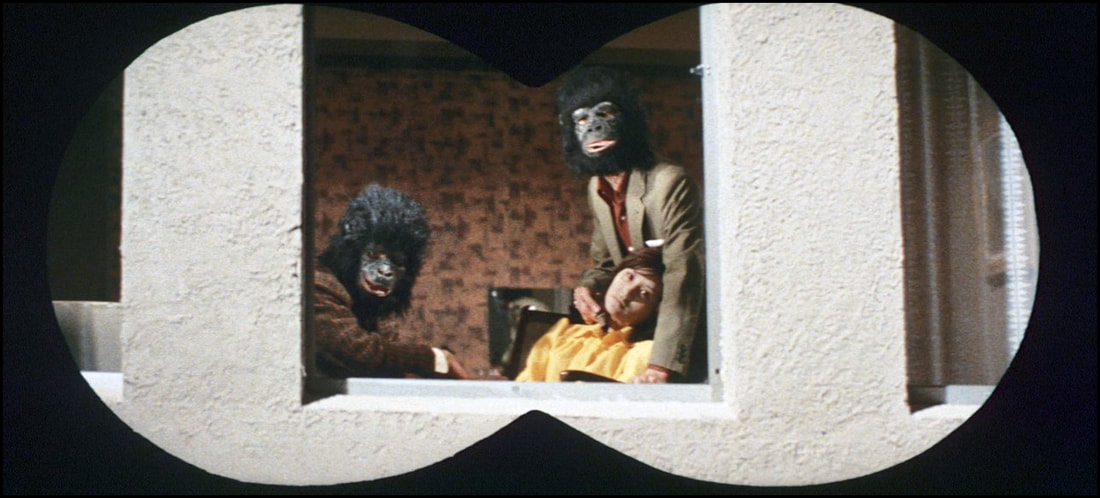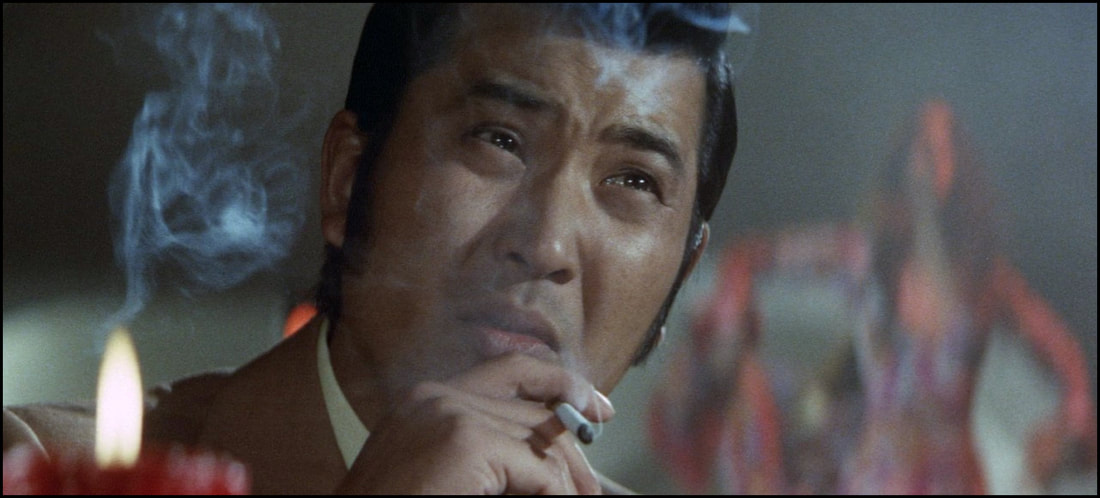While there might be hundreds if not thousands of really great crime dramas out there, I suspect that the truly best examinations of the shenanigans of the guilty are slim in number. Audiences and critics have long ago proclaimed Francis Ford Coppola’s The Godfather saga to among the top contenders, but I’ve no problem admitting that it just didn’t endear me the way other projects have. And then, of course, you have practically anything that emerged from the efforts of Martin Scorsese; as much as I appreciate a few of his big pictures, I do so love his American Prohibition series Boardwalk Empire and consider it among the crème de la crème. Naturally, there are more – productions from the great Michael Mann, David Fincher, and even Alfred Hitchcock – but as always I do tend to leave the ultimate choice up to you, the reader: I’m not here to tell you what to like, and I prefer just pointing you in the direction of something worthwhile.
In fairness, I haven’t seen all that many foreign crime flicks. I have seen a good number – the stuff from John Woo is particularly interesting, yet I do prefer Johnnie To’s library over many American storytellers – but I’m always on the lookout for something to reinvigorate the desire. Having only recently been treated to the greatness that was Hideo Gosha’s samurai films, I was pleased to also receive an all-new restoration of the writer/director’s Violent Streets. As I’d never heard of it (again, no surprise), I did a bit of research before sitting down with it, and I’m glad I did: my extended reading really served as a solid primer on things to look for in the picture, enhancing my enjoyment of this one greatly. Come the end of it – along with a second screening for clarity’s sake – it’s easily risen to the crop of being one of my favorite discoveries this year.
Let me tell you why after the break.
(NOTE: The following review will contain minor spoilers necessary solely for the discussion of plot and/or characters. If you’re the type of reader who prefers a review entirely spoiler-free, then I’d encourage you to skip down to the last few paragraphs for the final assessment. If, however, you’re accepting of a few modest hints at ‘things to come,’ then read on …)
From the film’s IMDB.com page citation:
“A retired yakuza is caught in the middle of a growing conflict between two rival clans.”
First, you can bet most of these old timers will be played to simmering greatness. At their age, they’re used to getting far more done with a steely-eyed glare than anything else. That might be a bit more hard-boiled than most folks like, but – as many will say – it is what it is.
Second, you can be sure that these old dogs won’t be all that enamored with the way crime and its young purveyors have evolved. Older men and women always have an expressed fondness for the way things used to be, and this fuels a good deal of their observed angst.
Finally, you can – without a doubt – expect that the main plot and possibly a good deal of the subplots will revolve around the concept of r-e-s-p-e-c-t. It’ll be in short supply – especially in a tale that traffics in ‘final respects’ that way crime dramas do – and that, too, will make for some great reflection.
Some in the viewing audience will find these universal themes to be little more than storytelling cliches, but – despite such reservations – they’re merely part of what makes a life of bad deeds into the experience that it is. Yes, I suppose the way some of these elements get so intricately woven into the plot and dialogue that they do run the risk of being lesser tropes at times; and yet it wouldn’t be even a serviceable crime drama if it ignored these staples. This is why audiences come to such tales in the first place – a meager but acceptable list of expectations, if you ask me – so buckle up, batten down, and be quiet … as the film’s about to begin.
Gosha’s Violent Streets is no different in that regard. It’s a sometimes bloody, sometimes vicious, and sometimes reflective yarn about the old meeting the new and the inevitable collision of worlds in conflict. It has tough men, bitter women, plenty of gunplay, and a wealth of nuanced deception on the part of its expansive cast. And – like any crime drama – audiences pretty much recognize the narrative structure for what it is – a necessary evil – and they might even know (or be able to predict) just how it’s all going to unfurl, mostly because every bad guy worth his weight in salt only goes down fighting in a hail of bullets. That doesn’t spoil the ending, per se, because there’s plenty more to think about before the credits roll.
That may sound a bit dour to some, but it’s pretty much a staple for any film involving aged or aging gangsters, of which Violent Streets most definitely applies. Egawa (played wonderfully by gangster-turned-actor Noboru Andô) finds himself once more on the outs with Togiku Group, a band of yakuza he served alongside in the past. Sometime back then, he did the honorably thing of ‘taking the fall’ to preserve the criminal organization. Upon his prison release, his chosen retirement from a life of crime was nonetheless rewarded with the gift of a nightclub from the group, and he’s spent much of his golden years turning ‘The Madrid’ into a local sensation. But when mob boss Gohara (Shigeji Takada) decides the club could today be better used as a bargaining chip with his encroaching rivals, Egawa ultimately realizes his only way out might very well be a return to violence.
So, indeed, Violent Streets is not without ample violence, and – much like in reality – it takes many shapes and sizes. There’s bloodshed, murders, fistfights, rape, double crosses, and a little bit more sprinkled wonderfully across its 96-minute run time, giving connoisseurs of crime dramas plenty of action to mull over. But perhaps a bit more than that, Streets works as a message film about how change inevitably leads to violence. It always leads to human consequences. It may not be today. It may not be tomorrow. But as constant as change is in this game of life, so will the bloody responses of those who resist it taking a foothold. Of that, there can be no mistake.
Egawa left behind a life of crime, having grown weary of the toll it took on him and those around him. Doing so meant that his girlfriend (Miyoko Akazi) would have little choice but to move on, eventually marrying Gohara in the process. The resulting change – managing a night club in the heart of contested territory – has not only meant he’d have to return to a life of bloodshed (we see him throwing out some gangsters in the film’s opening) but also taking up relations with an alcoholic club waitress Akiko (Maki Kawamura). Their romance results in bouts of Egawa slapping her around (in private) and forcing himself upon her, though we’re led to believe this is their normal coupling technique. So it’s very clear that change has truly only brought the man more violence.
But this is a thread – change causing violence – that dangles at each and every opportunity throughout the film.
Some in Egawa’s employ are working secretly to force all-out gang war between the Togiku Group and their enemy, the Western Japan Alliance. Attempting to force such a conflict, however, begins exacting a heavy price on each of them as both sides begin to suspect something a bit more nefarious might be afoot. (Change leads to violence.) In the process, one of Egawa’s men accidentally strangles to death a TV starlet they’ve kidnapped in a ploy to indict their gang rivals. (Again, change leads to violence.) A two-man hit squad – one gangster and his cross-dressing, blade-wielding counterpart – begin offing them in a search to recover the ransom money in a scam gone bad. (Even more change leads to even more violence.) The inclusion of a transvestite stage performer leading a secret life of crime as an assassin – a faux woman in a world formerly occupied almost solely by men – underscored just how deeply change was running in Japan of the early 1970’s, and the violence followed suit accordingly.
Violent Streets (1974) was produced by Toei Tokyo. DVD distribution (for this particular release) is being coordinated by the good folks at Film Movement. As for the technical specifications? While I’m no trained video expert, I thought that the sights and sounds within were very, very good: some of the early scenes appeared to be a bit washed over, so the highs and lows don’t quite pop as well as they could perhaps with a better remastering in the future? Lastly, if you’re looking for special features? The disc boasts a twenty-minute short with Tomoe Gosha (the director’s daughter) along with a video essay by film fanatic Patrick Macias. Lastly, the product packaging includes a 16-page booklet with an essay from Japanese film expert Mark Schilling. It’s a good collection, but honestly I would’ve loved a commentary track as there’s just so much in the film worth talking about.
Highly recommended.
Simply put, Violent Streets is a winner. I’ve read that Hideo Gosha’s crime thriller wasn’t theatrically popular in its day, but it’s gone on to craft an impressive cult following over the years. There’s a lot of style and polish wrapped up in here – along with some incredible performances that deserve more print than I could ever commit to them – and I strongly encourage those of you who have access to watching this one give it a go. Dismiss the usual blemishes that kinda/sorta go with the times, and you’ll likely find it one of the finer bad guys vs bad guys features you’ve come across in ages.
Old gangsters never die. They just reload.
In the interests of fairness, I’m pleased to disclose that the fine folks at Film Movement provided me with a complimentary Blu-ray of Violent Streets (1974) by request for the expressed purposes of completing this review. This contribution to me in no way, shape, or form influenced my opinion of it.
-- EZ





 RSS Feed
RSS Feed